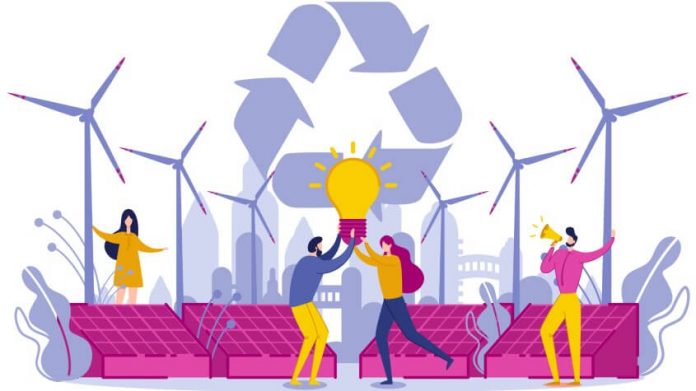This article is written by Durva Indulkar, pursuing a Diploma in Intellectual Property, Media, and Entertainment Laws from Lawsikho.com.
Table of Contents
Introduction
Environment plays a very significant role in human life. It includes things like land, water, air, plants, animals, soil and other microbiological organisms. The scope of this article is to understand all the challenges that are faced with respect to climate change and intellectual property and how various laws and regulations are incorporated to sustain the environment. And also to understand the challenges that are faced due to tremendous developments and how intellectual properties have contributed to green and clean technology transfer.
What is climate change?
Climate change is basically the change that is found in the usual weather of a particular place. Climate change is the actual change in the earth’s climate. This could be a change in the Earth’s usual temperature, or it could even be a change in the pattern of rainfall or snowfall that usually falls on Earth. Scientists who study the Earth have seen that the Earth’s climate is getting warmer day by day. There are many factors that cause the Earth’s atmosphere to change. However, most scientists believe that man has played a major role in climate change. Rapid industrialization, growth and development happening on a large scale in various fields to make human life easier and comfortable does contribute to some extent to the deterioration of the quality of basic resources that are available on the earth such as air, water and soil.
While development is essential for the economy, it is also essential that no irreparable damage is caused to the ecosystem. While addressing climate change it is necessary to understand that economic growth shall work more in favour of the environment rather than against the environment. The World Intellectual Property Organization (I.e. WIPO) has addressed this issue of climate change with great significance.
What is intellectual property?
Intellectual property as the name suggests is a creation of intellect I.e. the human mind. It basically protects what a human mind creates. It could be research, invention, drawing, painting, musical composition, etc. Intellectual property is also considered as an intangible asset or it can be considered as an intangible right exercisable in respect of tangible work.
There is a significant connection between climate change and intellectual property rights. To curb the effects of climate change we require evolving green technology. Green technology means the latest technology that is used to save and protect the environment. It basically signifies any kind of environmentally friendly or clean technology. Green technology further relates to the products and innovations of devices that are used in environmental science, green chemistry, promotion of sustainability and conservation of the natural environment.
Since intellectual property rights encourage people to make new innovations and developments, it is also being used to encourage new innovations which could help in protecting the environment and at the same time also continuing with the process of economic growth and development which is more favourable to the environment.
All such innovations and developments are regulated under the environmental laws as well as under the intellectual property regime.
Need for sustainable development
Due to the increase in global warming and pollution and issues like climate change, the need for sustainable development and sustainable living is recognized and encouraged. Sustainable development means development that meets the needs of the present generation without compromising the ability of the future generations to meet their own needs.
Climate change is a threat to the future of our planet, but many international committees believe that there is still time for us to adapt to it and mitigate its effects.
Earlier the international community had focused on trying to limit the emission of carbon dioxide, but based on the latest data, it can be seen that it has diversified its efforts promoting climate change adaptation and mitigation policies to help minimize the effects of climate change, whose consequences are already seen across the world.
Climate mitigation is aimed at tackling the causes and minimizing the possible impacts of climate change whereas adaptation looks at how to reduce the negative effects it has and how to take advantage of any opportunities that arise.
Challenges with climate change and intellectual property
International negotiations with respect to climate change are not functioning that smoothly. The debate is vastly divided as to what is the responsibility of a developed country and a developing country with issues such as the emission of greenhouse gases.
The major topic of argument is what role would intellectual property rights (especially patents) play with respect to the development or diffusion of climate-friendly technologies.
While developing countries consider intellectual property rights as a formidable barrier to the rapid transfer and the widest possible diffusion of climate-friendly technologies, developed countries see intellectual property rights as a vital prerequisite for the development and transfer of climate-friendly technologies.
Although several developed countries, like the US, don’t see climate change as a major issue of global justice and they refuse to place intellectual property rights on the agenda of international climate negotiations, it appears to us that this position is hardly justifiable. Scientists have realized that the absorption capacity of the Earth’s atmosphere for greenhouse gases emissions is limited. Due to which it is considered that the easiest solution to be taken up for this issue is that all the human beings should be given equal rights to use this global sink i.e. the earth’s atmosphere and therefore should be allotted equal quotas of emission permits. However, in the current political scenario distributive justice (i.e. equal quotas of emission permits) is highly fundamental but very difficult to implement.
- Technologies that aim at climate change mitigation are usually not the same as technologies that are needed for climate change adaptation. It is not completely inconceivable that some technologies might have an impact on both mitigations as well adaptation. In these cases, special guidelines are needed to be drawn. A central problem that will be faced is what the fund should actually aim at, whether mitigation or adaptation, or whether it should address both. If it is decided that such a fund should promote technologies that address both needs, again one has to justify what percentage of the available resources should be dedicated to each need.
For example, replanting of forests and restoring damaged ecosystems would amount to climate change mitigation whereas the production of diversifying crops so that they are better able to adapt to changing climates would amount to climate change adaptation.
- As having an impact, especially in the case of climate change mitigation, it is not bound to provide high scientific innovations, a restriction of what might be rewarded, and whatnot has to be justified in order not to appear arbitrary or selective.
This restriction favours breakthrough science and fails to incentivize the production of social programs or non-patentable, but potentially high impact innovations.
The strong technology is divided between developing and developed countries which makes it very difficult to find consensus on what kind of solutions should be incentivized. If there is a bias in favour of technology, we will not have to find consensus only among those who produce new technologies and those who do not, but also among those who are considering being the future manufacturers of the ready products and those who are not.
To take an example, it will be easier to measure the impact of an optimized engine that reduces emissions for luxury racing boats and it may even considerably save fuel expenses for its rich owners. On the other hand, since if it is not possible to measure the impact it won’t be easy to establish the reward size of a non-technological method of motivating people to live more sustainably, for example making a freely accessible and entertaining documentary movie showing the vulnerable position people face in smaller Pacific islands or a book showing and promoting different ways encouraging sustainable development. Such innovations even though they are more effective and have a much higher impact by causing a behavioural change will not be eligible for the fund’s monies.
- Unlike medicines, most climate-friendly technologies contain a fairly big bundle of patents. The fund will not be rewarding a single object, which will be used in its original form throughout the fund’s payout years. It is quite common to seek a license to use sub-components that will make one’s invention more efficient or appealing – often on a year-to-year basis. Due to the presence of a big bundle of patents, it becomes difficult to identify the use and ownership of climate-friendly technologies, thus making it difficult to decide the distribution of climate fund impact.
Even though there are various challenges that are faced due to climate change, Man has tried to come up with various solutions for the challenges faced due to climate change. In order to protect the environment, WIPO has encouraged various methods and techniques to enhance the environment for innovation. WIPO hosts the WIPO Green which is a multi-stakeholder platform that basically aims to promote innovation and diffusion of green technologies by connecting technology and service providers with those seeking innovative solutions. It basically supports global efforts to address climate change through the skills and technologies which are available via its network.
Green IP and Green Innovation
Keeping in mind the need for sustainable development, the need for Green IP also arises. The term ‘Green Intellectual Property’ or ‘Green IP’ refers to the protection of innovations in the field of green technology. It is a concept where innovations that are helpful to the environment in one or another way are legally protected. Green technologies tend to protect the environment by reducing the plausible hazards which are caused to the environment due to an increase in globalization, urbanization and rapid industrialization.
After understanding the need of the hour with regards to the protection of the environment and conservation of non-renewable resources, many countries understood the importance of Green IP and its need. As a consequence, several countries have come together and have taken various initiatives by making huge and effective investments in the research and development of green technological innovations. Various governments have understood the need of the hour and they incentivize Green Innovation and Green IP.
Initiatives taken to enhance and protect the Green IP
Following are a few initiatives that were made to enhance and protect the Green IP:
-
IPC Green Inventory
This is an initiative by WIPO. It is an online platform that is linked to the International Patent Classification system which facilitates searches for patent information relating to environmentally sound technologies.
-
Joint Clean Energy Research and Development Centre (JCERDC)
This is an initiative launched by US-India in 2009 for the advancement of clean energy and also to address global energy and environmental sustainability challenges, etc. Therefore, we can further conclude that Robust IP protection facilitates the creation, adaptation and distribution of green technology. Which further, helps to curb and mitigate the issues of global warming, climate change and depletion of non-renewable resources.
Conclusion
Climate change is a very major issue that needs to be addressed more seriously by all developed countries as well as developing countries. It is important to make sure that intellectual properties help in curbing the emissions of greenhouse gases. Whether the innovation is big or small if it is helping in mitigation and/or adaptation of climate change such innovation should be recognized and encouraged.
Students of Lawsikho courses regularly produce writing assignments and work on practical exercises as a part of their coursework and develop themselves in real-life practical skills.
LawSikho has created a telegram group for exchanging legal knowledge, referrals, and various opportunities. You can click on this link and join:
 Serato DJ Crack 2025Serato DJ PRO Crack
Serato DJ Crack 2025Serato DJ PRO Crack











 Allow notifications
Allow notifications


